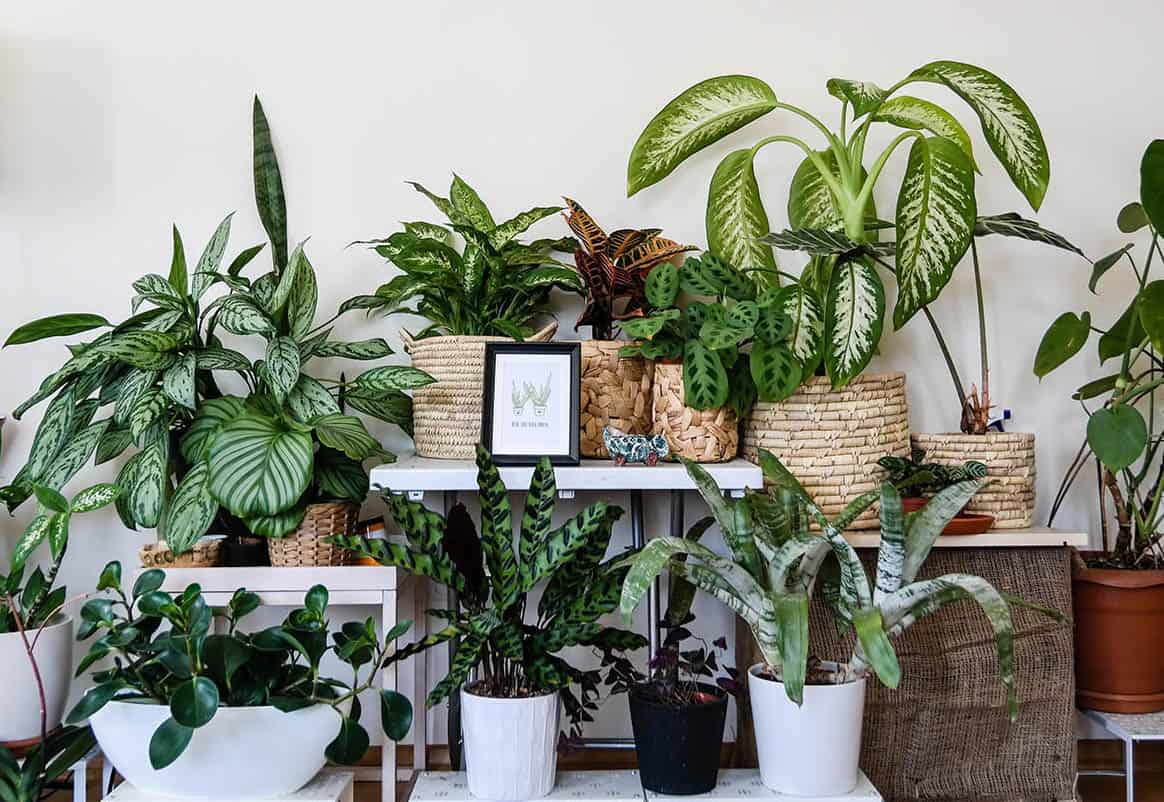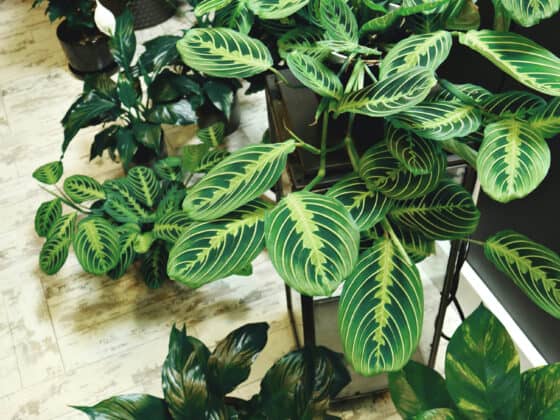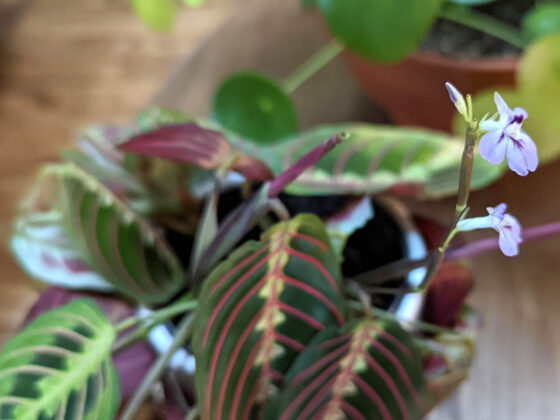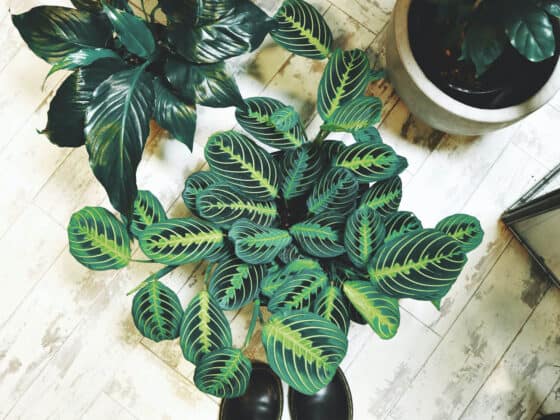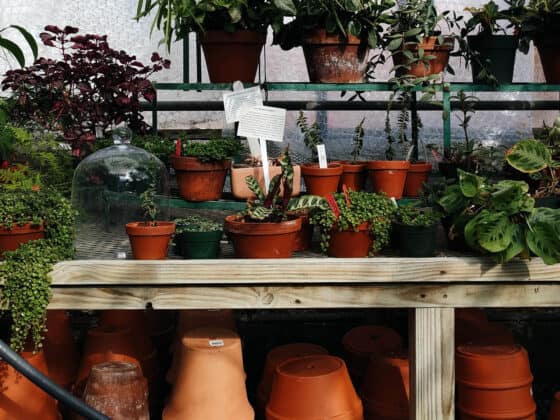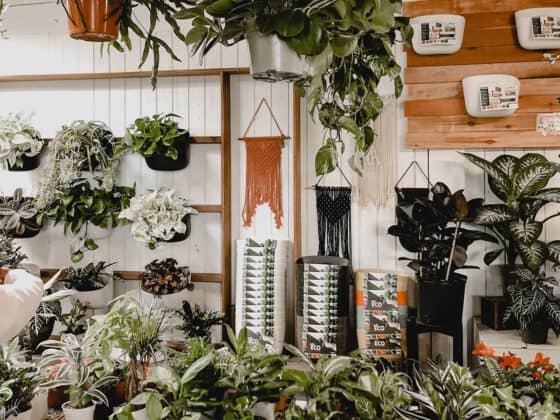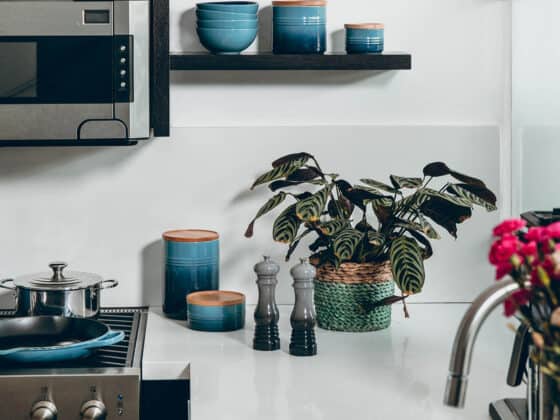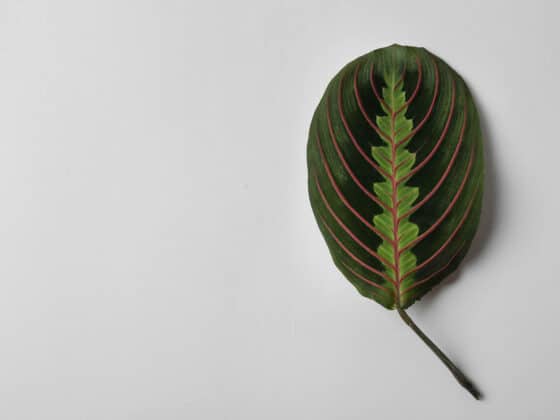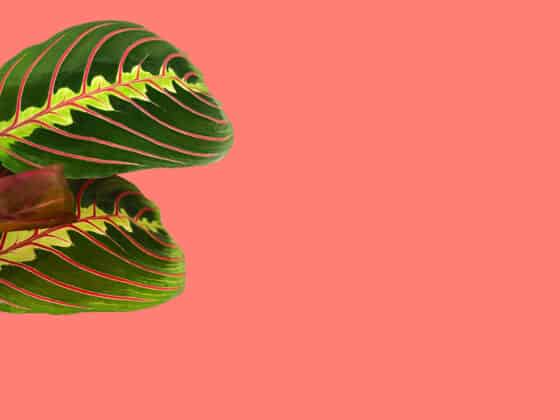Prayer Plants get their common name from their habit of folding their leaves up at night, making them look like praying hands. These plants move significantly over the course of a day, which makes them one of the most interesting houseplants around. But what exactly is a Prayer Plant? Are all plants with moving leaves considered Prayer Plants? And are Calatheas and Prayer Plants the same thing?
Prayer Plant is the common name of Maranta leuconeura. Marantas and Calatheas are both members of the arrowroot family, the Marantaceae, so they are closely related and easy to confuse. Calatheas exhibit the same type of folding-leaf movement that gives Marantas their name, but Marantas are technically the only genus with the common name Prayer Plant.
Because common names can be confusing, many plant enthusiasts tend to use scientific names to make absolutely clear which plant they’re referring to. In this case, Maranta leuconeura varieties are considered Prayer Plants, but even this can be confusing since Calatheas also fall into the broader Marantaceae category.
Although they are similar words, not all Marantaceae are Marantas (all Marantas and Calatheas are Marantaceae, though!). Even garden centers tend to mislabel these plants unintentionally, which can mislead consumers about what they have actually purchased.
What is a Prayer Plant?
The Prayer Plant, Maranta leuconeura, originates from tropical forests in South and Central America, where they thrive in warm, humid conditions. Because they grow low to the ground under the canopy of trees, Marantas grow well with mostly indirect light.
Although there are about 40-50 recognized species of Maranta, only a few of these are commonly found in nurseries and garden centers. You are most likely to find Maranta leuconeura ‘Erythroneura’ (Red Prayer Plant), Maranta leuconeura ‘Kerchoveana’ (Green Prayer Plant), and Maranta leuconeura var. Leuconeura (Black Prayer Plant) for sale. These varieties all have distinctive oval leaves with striking variegation. They can be distinguished from one another by the colors and patterns on their leaves.
With the right care, Marantas can bloom indoors, but their small white flowers are not remarkable. These plants are mainly grown for their beautiful foliage and fascinating habit of changing position throughout the day.
Is a Calathea a Prayer Plant?
Calatheas can be considered a sibling to Maranta leuconeura, which is the actual Prayer Plant. Within the Marantaceae family of plants, there are 31 genera and around 530 individual species. The Calathea genus contains several well-known species typically found as houseplants (and many, many more that are not!)
Calathea roseopicta ‘Medallion,’ Calathea makoyana (Peacock Calathea), Calathea lancifolia (Rattlesnake Plant), and Calathea orbifolia (Round-Leaf Calathea) are some of the Calathea varieties commonly available in the U.S. These plants are prized for their unusual foliage.
Aside from Calathea and Maranta genera, Stromanthe and Ctenanthe (Never Never Plant) are also members of the Marantaceae family that are popular as houseplants. Like their relatives, these plants have vibrant, unexpected colors and can give your home a unique tropical look.
Since Calatheas are closely related to Marantas and exhibit similar movement (leaves that move up and down depending on the time of day), it is easy to understand why the name Prayer Plant often gets misused as a blanket term covering this group of plants. However, this “praying” habit is far more pronounced in Maranta leuconeura than in others in the Marantaceae family.
The Similarities Between Marantas and Calatheas
Once you have seen a few examples of Marantas and Calatheas, it’s actually not too hard to tell them apart. However, being part of the same family, they do have several similarities. First, they have similar growth patterns and large, patterned leaves. Since their native habitat is on the forest floor, these plants are low-growing spreaders.
Both Marantas and Calatheas prefer areas away from direct sunlight, and can tolerate lower-lighting conditions than many other houseplants. Too much sun can make them lose color in their leaves or cause sunburn. A north- or east-facing window is an excellent place for these plants.
Marantas and Calatheas are both slow growers, and they do best in high humidity and moist (but not wet) soil. Because of their sensitivity to watering, air temperature, and humidity, these plants can sometimes be considered finicky.
The most common issue with these plants is crispy, dry leaf edges caused by inconsistent watering. Despite being challenging, their gorgeous foliage makes it worthwhile for many of us to cater to them.
As mentioned previously, the other main similarity between Marantas and Calatheas is how much they move! Although it’s too slow to observe their movement in real-time, you can notice a significant change from morning to evening as these plants change position.
There are plenty of time-lapse videos that can show you exactly how amazing this movement is. No one knows for sure why this happens, but it’s theorized that their movement is a way to regulate how much light they take in or capture more moisture from the air.
The Differences Between Marantas and Calatheas
These two plants look quite different from one another, once you know what you are looking for. Currently, there are only a few Maranta species grown as houseplants, and they are all similar to one another, aside from differences in the color or pattern of their leaves.
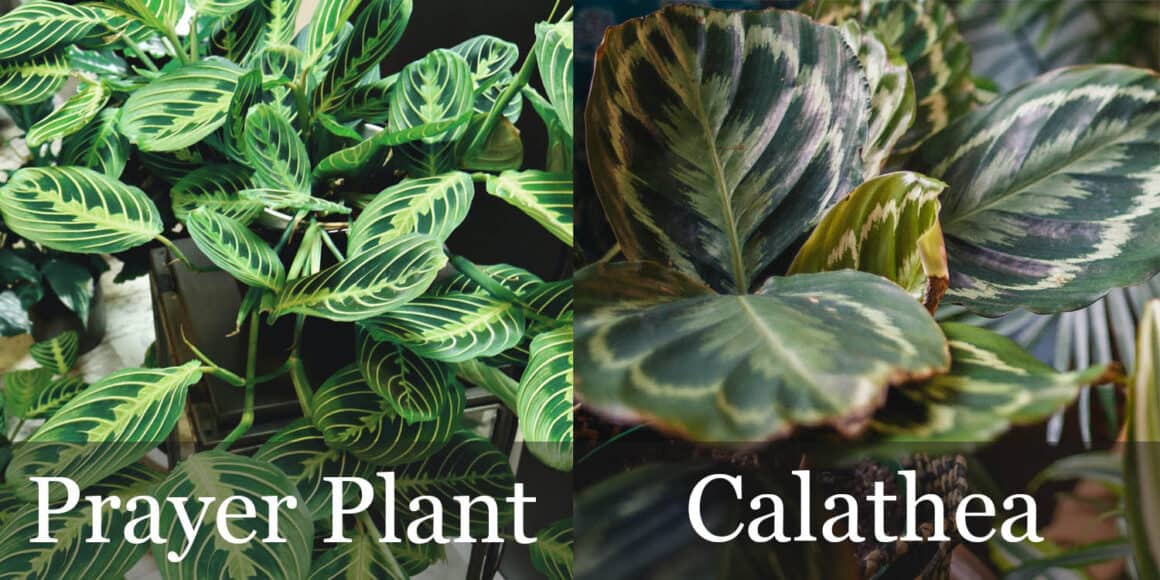
However, comparing Maranta varieties, you can easily understand that they are all part of the same genus. Calatheas show a wider variety of colors and shapes than Marantas and can look very different from one species to another.
In general, Marantas and Calatheas like similar care conditions, but Marantas are somewhat easier. Marantas can take slightly cooler temperatures (down to 60 F/16 C) than Calatheas without damage and are more forgiving about humidity.
Calatheas and Marantas have different growing patterns, but it may be hard to tell this if the plant is still immature. A mature Maranta leuconeura grows as a trailing plant and can look great in a hanging pot, while Calatheas grow upright and are bushier.
Both genera can be propagated by division, but Marantas can also be propagated by stem cuttings. The longer stems of Marantas can be clipped off and propagated in water, as long as the stem cutting includes a node. Both plants produce flowers and seeds in the wild but are unlikely to do so when they’re grown indoors.
Which Plant Do You Have?
The easiest way to tell if your plant is a true Prayer Plant (Maranta leuconeura) or a Calathea is to look at its leaves. Marantas generally have oval leaves, while Calathea leaves run the gamut – round, oblong, and lance-shaped. Maranta leaves have strong symmetrical patterns, and some types have brightly colored veins and ribs.
On the other hand, Calathea leaves come in a wide variety of colors, often featuring bright colors. Calathea designs can sometimes look as though they have been painted on the leaf, such as the pink pinstripes on Calathea ornata. Both Marantas and Calatheas can have dark burgundy or purple coloration on the underside of their leaves.
Since there are only a few types of Marantas commonly available, you may be able to rule out the Prayer Plant easily by comparing your plant to photos online. Identifying a Calathea may be a bit more difficult, but if you aren’t able to find a photo of a Calathea that looks like yours, it could actually be another Marantaceae species, such as a Ctenanthe.
Regardless of which member of the Marantaceae family you have, these distinctive plants will stand out with their unusual colors and leaf designs. Although they are not the easiest houseplants to keep happy, they are also resilient enough to grow back if you make a mistake and lose some leaves. Given the right conditions and attention, both Calatheas and Marantas can be stunning additions to your collection.






